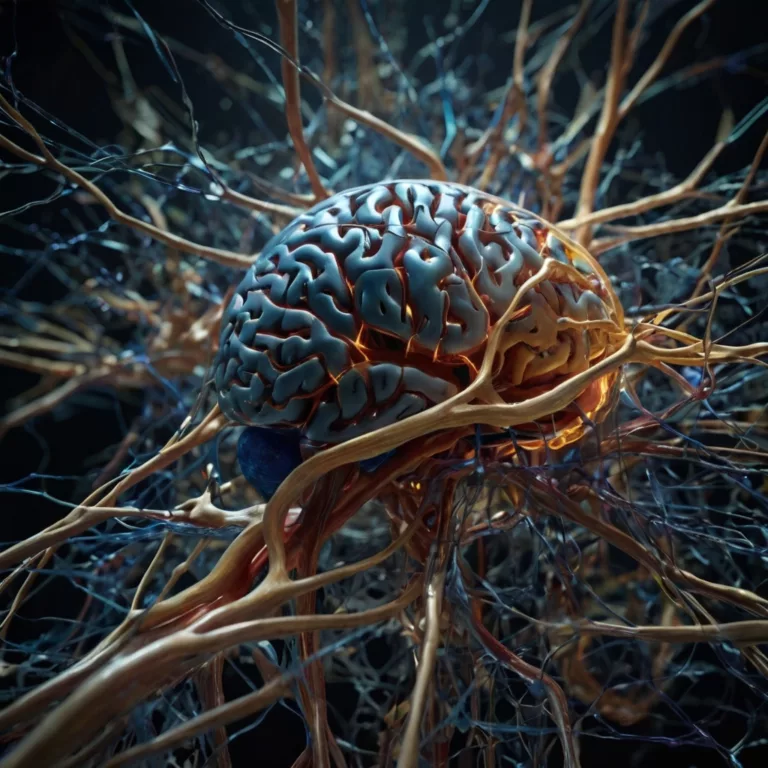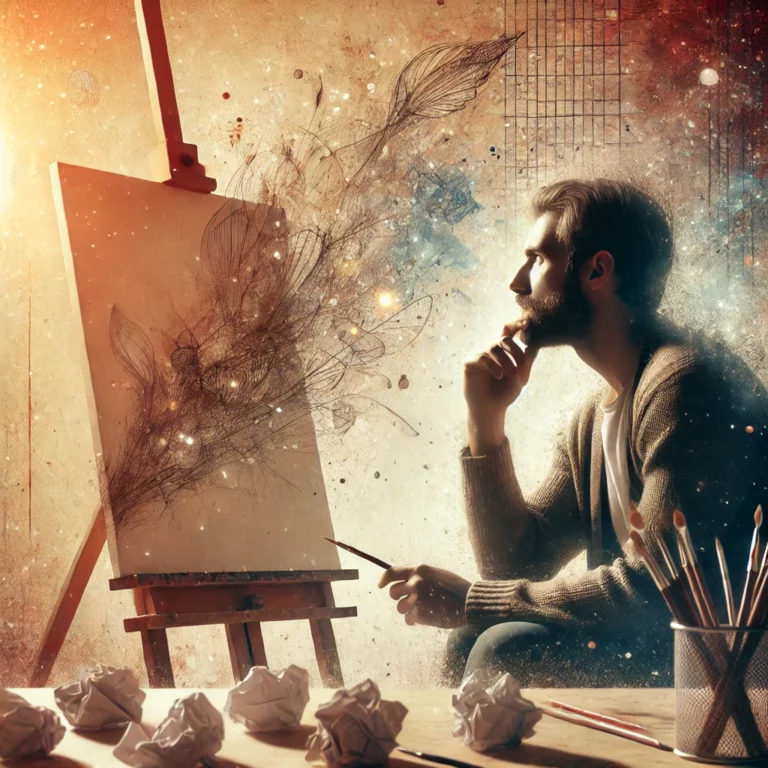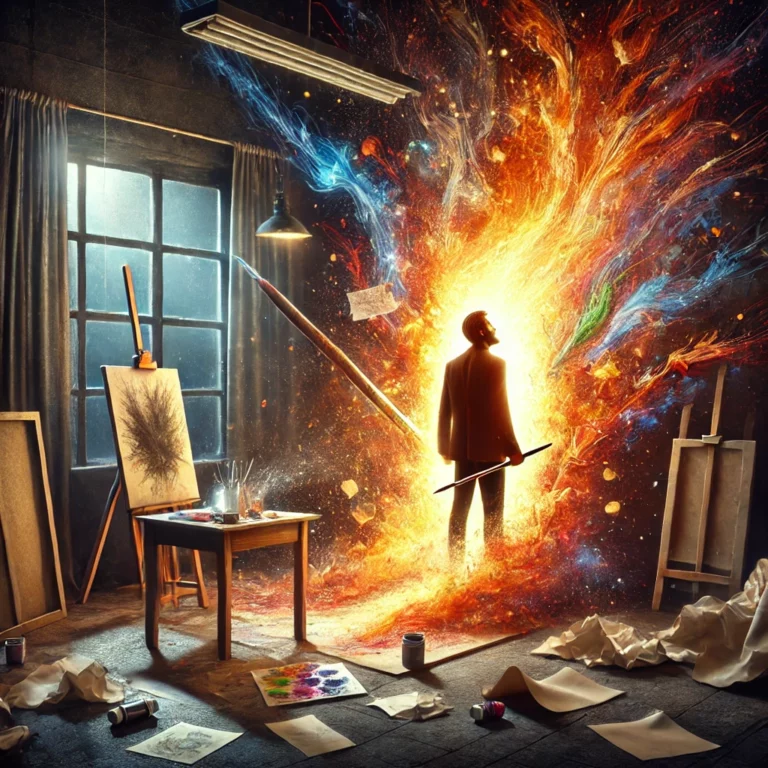Crossroads of Inspiration: Where Emotion Meets Innovation
The Alchemy of Feeling and Ingenuity
Innovation is often portrayed as a cold, logical process a march of algorithms, data, and technical precision. Yet, history’s most transformative breakthroughs, from the Sistine Chapel to the iPhone, are rooted in something far more primal: human emotion. This article explores the symbiotic relationship between emotion and innovation, revealing how joy, grief, love, and rage act as catalytic forces that reshape industries, art, and science. Drawing on neuroscience, psychology, and case studies across millennia, we dissect the mechanisms by which feeling fuels invention and how innovators harness emotional intelligence to transcend boundaries.
I. The Neuroscience of Emotion-Driven Innovation
1.1 Brain Circuits: Where Feeling Meets Creation
The brain’s emotional and creative networks are deeply intertwined:
- Amygdala-Prefrontal Cortex Axis: The amygdala, hub of emotional processing, communicates with the prefrontal cortex (PFC), which governs planning and problem-solving. A 2020 Nature Neuroscience study found that heightened amygdala activity during emotional arousal enhances PFC flexibility, enabling novel connections.
- Default Mode Network (DMN): Active during introspection and daydreaming, the DMN integrates emotional memories with imaginative scenarios. fMRI scans show DMN activation in poets crafting metaphors (Frontiers in Psychology, 2019).
Neurotransmitters as Messengers:
- Dopamine: Reward-seeking behavior driven by dopamine fuels risk-taking in entrepreneurs like Elon Musk.
- Oxytocin: The “bonding hormone” fosters collaborative creativity, as seen in tight-knit teams at companies like Pixar.
1.2 Emotional Resonance in Decision-Making
- Somatic Markers Hypothesis: Neuroscientist Antonio Damasio’s theory posits that bodily emotions (e.g., gut feelings) guide complex decisions. Steve Jobs famously relied on intuition to greenlight Apple’s minimalist designs.
- Empathy-Driven Design: IDEO’s human-centered design framework prioritizes emotional user experiences, exemplified by the Oxo Good Grips kitchen tools, crafted for arthritis sufferers.
Case Study: James Dyson’s 5,127 failed prototypes for the bagless vacuum were sustained by frustration with existing models—a rage that became productive obsession.
II. Psychological Frameworks: Emotion as Creative Fuel
2.1 The Role of Emotional Intelligence (EQ)
- Daniel Goleman’s EQ Model: Self-awareness, self-regulation, and empathy enable innovators to channel emotions constructively.
- Satya Nadella at Microsoft: His empathetic leadership revitalized company culture, driving cloud computing breakthroughs.
- Negative Emotions as Catalysts:
- Grit from Grief: After losing his son, Ray Dalio developed Bridgewater’s “radical transparency” philosophy, reshaping hedge fund strategies.
- Anger in Activism: Greta Thunberg’s climate strikes merged teenage fury with strategic innovation in environmental communication.
2.2 Flow States and Emotional Alignment
- Mihaly Csikszentmihalyi’s Flow Theory: Emotional engagement in tasks (e.g., a programmer coding through the night) triggers flow, optimizing creativity.
- Disney’s “Blue Sky” Sessions: Pixar’s emotionally charged brainstorming meetings birthed films like Inside Out, which personifies emotions as characters.
2.3 Post-Traumatic Growth and Innovation
- Trauma as a Creative Crucible: A 2017 Journal of Traumatic Stress study linked trauma to heightened cognitive flexibility.
- Frida Kahlo: Chronic pain and heartbreak birthed surrealist masterpieces.
- Nelson Mandela: 27 years in prison forged his vision for peaceful revolution.
III. Historical Case Studies: Emotion’s Role in Epochal Shifts
3.1 Renaissance Florence: Passion as Political Power
- Lorenzo de’ Medici: His patronage of artists like Botticelli was driven by a love for beauty and a desire to outshine rival city-states.
- Michelangelo’s David: Carved from flawed marble, the statue channeled Florentine defiance against larger adversaries.
3.2 The Romantic Era: Rebellion Codified
- Beethoven’s Eroica Symphony: Initially dedicated to Napoleon, the piece was rebranded as a “heroic” anthem of democratic ideals after Beethoven’s disillusionment.
- Mary Shelley’s Frankenstein: Born from grief (her child’s death) and existential dread, the novel pioneered science fiction.
3.3 The Digital Revolution: Love, Loss, and Code
- Steve Jobs’s Calligraphy Obsession: His emotional attachment to typography shaped Apple’s design ethos.
- Tim Berners-Lee’s Grief-Driven Web: The death of his parents during WWII inspired his quest for global connectivity via the World Wide Web.
IV. Modern Applications: Emotion in Tech, Art, and Business
4.1 Emotion AI: Machines That Feel (or Pretend To)
- Affective Computing: MIT’s Rosalind Picard pioneered algorithms that detect human emotions via biometrics, used in mental health apps like Woebot.
- Ethical Dilemmas: Critics warn of manipulative marketing (e.g., Spotify’s mood-based playlists) and privacy breaches (Journal of Business Ethics, 2021).
4.2 Art-Tech Hybrids: Emotional Storytelling Reimagined
- Refik Anadol’s Data Sculptures: Using AI to visualize collective emotions from social media data (e.g., Machine Hallucinations).
- Virtual Reality (VR) Empathy Machines: Projects like Clouds Over Sidra (a Syrian refugee’s VR story) evoke compassion through immersion.
4.3 Corporate Case Study: Airbnb’s “Belong Anywhere”
- Emotional Branding: CEO Brian Chesky’s focus on “human connection over transactions”
- EQ Metrics: Airbnb tracks user sentiment via NLP analysis of reviews to refine offerings.
V. Barriers: When Emotion Hinders Innovation
5.1 The Double-Edged Sword of Passion
- Founder’s Syndrome: Overattachment to a vision can blind leaders to market shifts (e.g., Blockbuster’s dismissal of streaming).
- Burnout: Intense emotional investment in startups leads to 72% founder burnout rates (Harvard Business Review, 2020).
5.2 Cultural Taboos and Emotional Suppression
- Stigma in STEM: A 2022 Nature survey found 45% of scientists fear discussing mental health, stifling creative risk-taking.
- Gender Bias: Women’s emotions are often dismissed as “hysteria,” marginalizing voices in tech and leadership.
5.3 Algorithmic Emotion: The Empathy Deficit
- AI’s Emotional Blind Spots: Chatbots like Replika struggle with nuanced empathy, risking user harm (MIT Technology Review, 2023).
- Automation Anxiety: Fear of job loss inhibits workforce innovation, per the World Economic Forum’s 2023 report.
VI. Cultivating Emotion-Informed Innovation
6.1 Emotional Agility Training
- Susan David’s Framework: Labeling and accepting emotions (e.g., “fear of failure”) reduces their disruptive power.
- Google’s Search Inside Yourself Program: Mindfulness practices enhance EQ in tech teams.
6.2 Designing Emotional Ecosystems
- Biophilic Workspaces: Amazon’s Spheres in Seattle use nature to reduce stress and spark creativity.
- Psychological Safety: Google’s Project Aristotle found that teams thrive when members feel safe expressing emotions.
6.3 Policy and Education
- Emotion-Centric Curricula: Finland’s schools teach emotional literacy alongside STEM, fostering holistic innovators.
- Mental Health Grants: The EU’s Horizon Europe funds startups addressing emotional well-being through tech.
The Heartbeat of Progress
Emotion is not the antithesis of innovation but its lifeblood. From the anguish that fuels social revolutions to the joy of a perfectly designed user interface, feeling and ingenuity are inseparable. As AI and globalization reshape our world, the challenge and opportunity lies in designing systems that honor humanity’s emotional core while propelling us toward uncharted frontiers.
Call to Action:
- Audit Emotional Drivers: Identify which emotions (e.g., curiosity, frustration) fuel your creativity.
- Build EQ Infrastructure: Foster workplaces where vulnerability is strength.
- Ethical Tech Design: Prioritize empathy in AI and data systems.
- Embrace Discomfort: Innovate because of emotions, not despite them.
In the words of Maya Angelou, “People will forget what you said, but they will never forget how you made them feel.” At the crossroads of inspiration, emotion is both the journey and the destination.
References
- Damasio, A. (1994). Descartes’ Error: Emotion, Reason, and the Human Brain. Penguin Books.
- Csikszentmihalyi, M. (1990). Flow: The Psychology of Optimal Experience. Harper & Row.
- Goleman, D. (1995). Emotional Intelligence: Why It Can Matter More Than IQ. Bantam Books.
- Picard, R. W. (1997). Affective Computing. MIT Press.
- Kaufman, S. B., & Gregoire, C. (2015). Wired to Create: Unraveling the Mysteries of the Creative Mind. Perigee Books.
- Nature Neuroscience. (2020). “Amygdala-PFC Connectivity and Creative Problem-Solving.” DOI:10.1038/s41593-020-0654-2
- World Economic Forum. (2023). The Future of Jobs Report. Link
- Harvard Business Review. (2020). “The Burnout Epidemic in Startups.” Link
- MIT Technology Review. (2023). “The Limits of Empathetic AI.” Link
Art11deco







